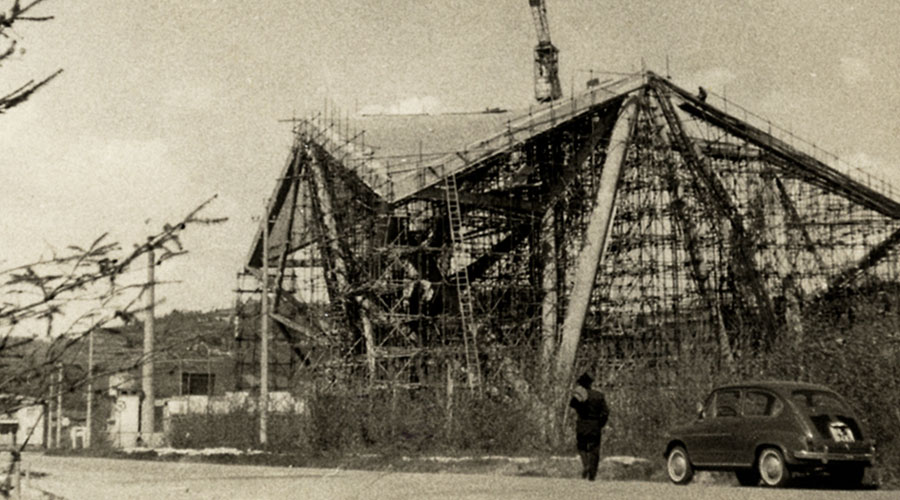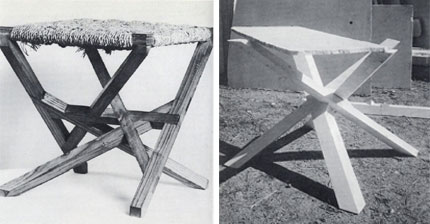We completed a paper on the construction history of the Church of Longuelo. The authors are: Carlo Deregibus and Alberto Pugnale. The paper will be published on the “Proceedings of the International Association for Shell and Spatial Structures (IASS) Symposium 2009: Evolution and Trends in Design, Analysis and Construction of Shell and Spatial Structures”.
UPDATE (The article was then expanded and published in "Construction History", Vol.25, you can read it here).
Abstract
This paper presents a critical study of the church of Longuelo, Italy, designed in 1966 by Giuseppe (Pino) Pizzigoni (1901–1967), an Italian architect who lived and worked in the city of Bergamo. He began his studies on shell structures in the Fifties and many of his buildings show outstanding skills in conceiving and handling complex structures. The church is one of his most interesting works: it is divided in four identical free parts, each composed by four shells joined by a fifth one, supported by twenty-one bars which realize a statically-determinate spatial frame resulting in an outstanding inner space.
All during the XX Century, several Italian architects devoted their efforts in finding a synergy between structure and formal character, economically reasonable while rich of new architectural opportunities. Among the most notable there are personalities like Pier Luigi Nervi, Luigi Moretti and Sergio Musmeci, but also a lot of almost unheard-of architects, whose works are of utter interest. Here a very singular building of one of these designers, namely Pino Pizzigoni, is presented: the church of Longuelo. The main information related to this building are to be found directly in his archive, located in the public library of Bergamo “Angelo Mai [9], from his own sketches and written records, which often are all but clear and marked by consistency.
The second section describes the multifaceted personality of Pizzigoni, with special attention to the last years of his life. In the third one, we present an overview of the church to understand its genesis and evolution. The fourth section elaborates on the structural behaviour of the church: as the descriptions by the architect are often confused, different suggestions and considerations about built structure are pieced together. Finally, before the conclusion section, the fifth one looks at the real church, its actual state and its aging.







